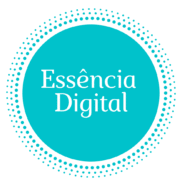In the physical world, trust is built through a firm handshake, direct eye contact, and a welcoming, well-maintained storefront. In the digital world, that first handshake is your visual identity. Before a user reads a single word of your copy or clicks a single button, they are making a split-second, subconscious decision: “Can I trust this?”
Trust is the essential currency of the digital economy. It’s the foundation upon which every subscription, purchase, and data submission is built. While functionality, security protocols, and social proof are all critical layers, the first and most immediate layer is visual.
A strong visual identity doesn’t just make your brand look good; it makes it feel credible, professional, and safe. This guide explores the psychological and strategic ways in which your brand’s design is a primary driver of digital trust.
The 50-Millisecond Judgment: First Impressions Are a Survival Instinct
Scientific studies have shown that users form a powerful first impression of a website’s design in as little as 50 milliseconds. This isn’t superficiality; it’s a cognitive shortcut rooted in our survival instincts. Our brains are wired to make rapid assessments of our environment to determine if it is safe and credible.
In a digital context, this translates to a near-instant judgment based on visual cues.
- Poor Visuals Trigger Distrust: A website that looks dated, cluttered, inconsistent, or unprofessional triggers subconscious alarm bells. The user thinks, “If they don’t care about their own presentation, will they care about my data security? Is this a legitimate business?”
- Strong Visuals Inspire Confidence: A clean, modern, and cohesive visual identity signals professionalism, stability, and attention to detail. It creates a “halo effect,” where the positive impression from the design extends to the entire brand, making the user feel they are in a safe and reliable place.
The Proxy for Quality: When Design Becomes the Product
In a digital marketplace, users can’t physically touch or inspect your product before buying. For SaaS platforms, mobile apps, and online services, the user interface is the product in the user’s mind. Therefore, its design becomes a tangible proxy for the quality of what lies beneath.
Think about the apps you trust most with your sensitive information, like banking or health tech.
- A financial app like Stripe or Revolut uses a clean, precise, and organized visual identity. This isn’t just an aesthetic choice; it’s a strategic one. The design communicates security, order, and competence, making users feel safe enough to entrust them with their financial data.
A polished design reassures users that the same level of care and professionalism that went into the visuals has also gone into the security, functionality, and reliability of the service itself.
Building Confidence Through Consistency: Reducing Cognitive Load
Our brains are wired to recognize patterns and crave predictability. When a brand’s visual elements—its buttons, headings, icons, and forms—look and behave consistently across every page and platform, it creates a sense of order and reliability.
This visual consistency does two critical things to build trust:
- It Reduces Cognitive Load: The user doesn’t have to waste mental energy learning new rules for every new screen. This makes the experience feel easy and effortless.
- It Fosters a Sense of Control: A predictable environment makes users feel competent and in control of their journey. This feeling of empowerment directly translates into trust in the platform.
A user who feels frustrated or confused by an inconsistent interface is a user who does not trust the brand behind it.
The Human Touch: Demonstrating Empathy Through Inclusive Design
Your visual identity can be a powerful way to show that you see and care about your users as human beings, not just as data points. An empathetic design is an inherently more trustworthy design.
You can communicate empathy and build trust through:
- Accessibility: By adhering to Web Content Accessibility Guidelines (WCAG), you ensure your brand is usable for people with disabilities. This includes using high-contrast color palettes, legible typography, and clear focus states. This is a powerful signal that you care about inclusivity.
- Authentic and Diverse Imagery: Using stock photos that represent a wide range of real people—across different ages, ethnicities, and abilities—shows that your brand is for everyone.
- User-Centric Visuals: Creating clear iconography and helpful illustrations that guide the user, rather than confusing them, shows that you have considered their experience from their point of view.
The Visual Promise: Aligning What You Look Like with What You Say
Every brand makes a promise. You might promise to be “simple,” “innovative,” “luxurious,” or “eco-friendly.” Your visual identity is the most immediate proof of that promise. When your visuals align with your words, you create a cohesive and believable brand story. When they don’t, you create brand dissonance.
- If your brand promise is “innovation,” but your website uses a dated design from ten years ago, you create a credibility gap.
- If your brand promise is “simplicity,” but your app is cluttered with confusing menus and inconsistent buttons, you have broken that promise.
A strong visual identity ensures you “walk the talk” visually, reinforcing your messaging and proving to users that your brand is consistent and authentic.
Conclusion: Your Digital Handshake
In the digital economy, trust is earned in layers, but the first and most immediate layer is always visual. Your visual identity is the digital handshake, the eye contact, and the professional attire of your brand. It sets the tone for every interaction that follows.
By investing in a professional, consistent, and empathetic visual identity, you are not just creating a more beautiful brand. You are building a more trustworthy one, laying the essential foundation for turning skeptical first-time visitors into loyal, long-term customers.

